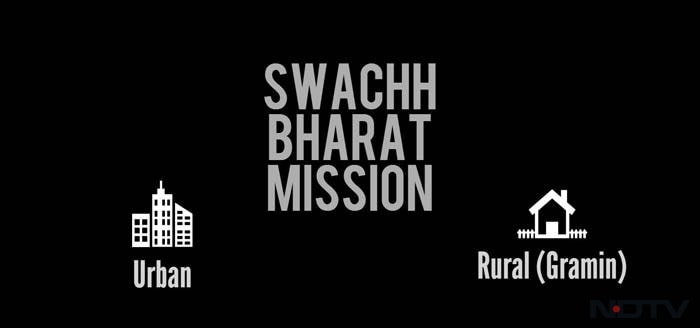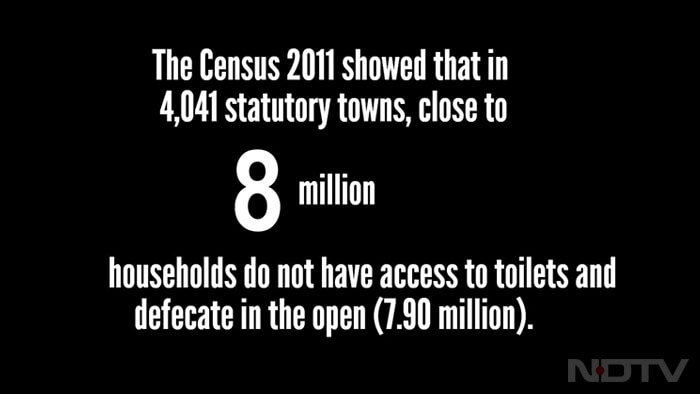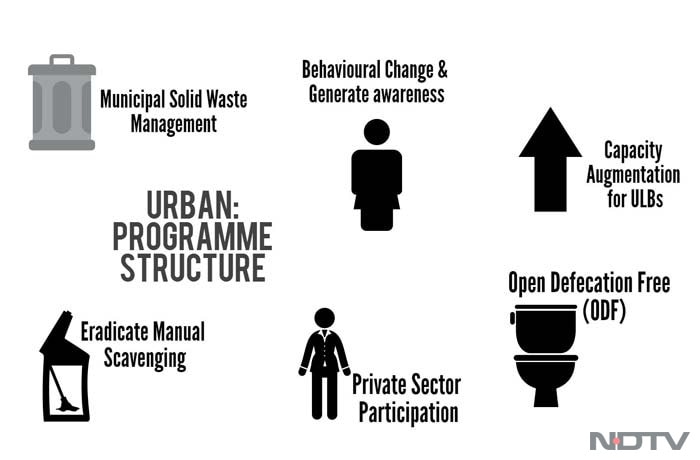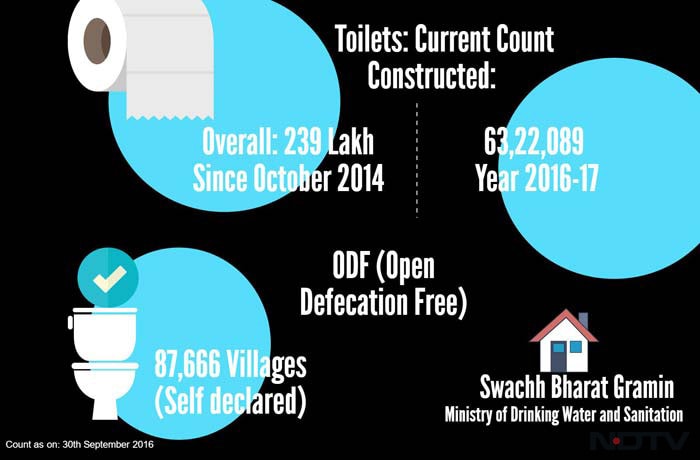Two Years On, What Is The Status Of Swachh Bharat Abhiyan?
Prime Minister Narendra Modi launched the 'Swachh Bharat Abhiyan' (Clean India Mission) on October 2, 2014. Today, the mission has garnered 13,685 active participants, 19,188 pledges and 1,171,862 contributed hours. But what has it achieved so far and is the campaign on target?
-
On October 2, 2014 Prime Minister Narendra Modi launched the Swachh Bharat Abhiyan as a national movement on Mahatma Gandhi's 145th birth anniversary. According to the Swachh Bharat Mission (SBM) guidelines, the Ministry of Urban Development and the Ministry of Drinking Water and Sanitation implement the SBM for urban and rural areas respectively.
-
In the 4,041 statutory towns, including 3,823 non- NE states, inadequate sanitation can pose a major challenge to the social and economic development in the state with accompanying health costs and the overall impact of untreated sewage on the levels of water pollution.
-
In the urban areas, the SBM focuses on constructing individual toilets, community toilets and solid waste management. The adopted approach for the rural areas percolates to the Gram Panchayat level and encompasses implementation of strategies, behavioral change and delivery mechanisms. The States are provided latitude in designing the delivery mechanisms depending on local sensibilities and demands.
-
The SBM guidelines suggest the following actions to ensure the target for Open Defecation Free (ODF) is achieved: 1) 80% of urban households defecating in the open to be considered for the construction of individual household latrines. 2) 20% of urban households defecating in the open to be considered for the construction of community toilets. 3) An estimated 5% of the urban population (taken as floating population) should be considered for the construction of public toilets.
-
The ULBs are responsible for streamlining the intersection of the informal sector (rag pickers) and formal system of Solid Waste Management (SWM) within cities. SWM is a process consisting of waste segregation and storage from the source to the location of final disposal of solid waste. Currently, 39,571 wards have achieved 100% door-to-door waste collection.
-
The city of Mysore in Karnataka topped the Swachh Bharat rankings, in a survey conducted among 476 cities in the nation, with minimal open defecation and an extensive SWM system. Overall, four cities from the state figured in the top 10 ranked cities with Bengaluru leading the list of capital cities at the 7th rank. Overall, Southern states lead the charts with 39 cities in the top 100 followed by 27 from the East, 15 from the West, 12 from the North and 7 from North-Eastern States. The bottom 100 cities comprised of 74 cities from the North and 21 from the East.
-
The Swachh Survekshan 2016 rankings placed the district of Mandi in Himachal Pradesh in the first place with 95% of public places in the district found to have no litter in their surroundings and 99% of households without stagnant wastewater in their area. West Sikkim, Shimla, East Sikkim and Hamirpur closely followed Mandi as districts from Sikkim and Himachal Pradesh topped the rankings. Sindhudurg, in the category of districts in the plains, achieved the first place with 96% of households found to have no litter in their surroundings and 98% without stagnant water within their area. Overall, the Swachh Survekshan rankings considered 75 districts and evaluated the areas on levels of cleanliness, hygiene and sanitation.
-
Currently, 87,666 villages have been declared ODF, besides 1,544 villages in Namami Gange areas. Overall, 24 districts and one state, Sikkim, have achieved ODF status with Kerala, Haryana, Gujrat and Maharashtra potentially achieving ODF status in the near future. According to Union Minister for Rural Development, Drinking Water and Sanitation and Panchayati Raj Narendra Singh Tomar, one lakh villages will achieve ODF status by October 2 this year.










